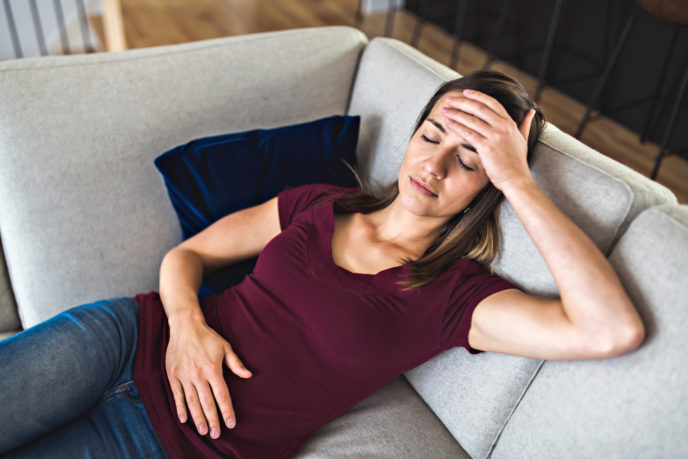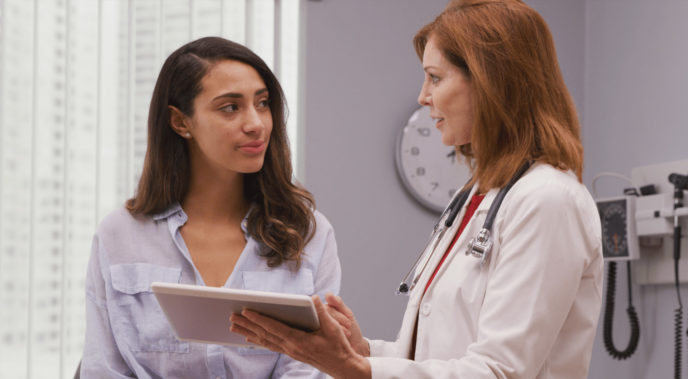
When Should Uterine Fibroids Be Treated

Uterine fibroids are a common health issue for women of childbearing age. While many people experience no symptoms, others suffer from heavy bleeding, pelvic pain, and bladder problems. So, when is it time to seek treatment for uterine fibroids?
American Fibroid Centers is a leading fibroid treatment center with convenient locations in Queens, Fishkill, Harlem, Brooklyn, West Orange, NJ, and Cincinnati, OH. Below, we explore when to pursue treatment for uterine fibroids and how our minimally invasive procedure – known as uterine fibroid embolization – can provide fibroid pain relief.
What are uterine fibroids, and who is likely to get them?
Uterine fibroids are noncancerous growths that develop inside the wall of the uterus. While they can occur at any age, most women experience them during their childbearing years – between the ages of 30 and 40. It is estimated that up to 80% of women will develop uterine fibroids before the age of 50.
Fibroid symptoms vary depending on the size, location, and type of fibroid. Some women experience no symptoms at all, while others have heavy menstrual bleeding, pelvic pain and pressure, bloating, urinary frequency and urgency, and constipation.
When to seek treatment for uterine fibroids
Small fibroids often cause no symptoms and require no treatment from a professional. In fact, some women do not realize they have fibroids until they undergo a pelvic exam or imaging test for another reason.
If you experience symptoms related to uterine fibroids, however, treatment may be necessary. Many women opt to manage fibroid pain with medications like over-the-counter pain relievers. While this provides temporary relief, it does not address the underlying problem and is often ineffective in the long term.
A specialist can explore your options if you suffer from severe fibroid symptoms or if conservative solutions fail to work. Our team of experts at American Fibroid Centers has extensive experience treating fibroids through a minimally invasive procedure. We work with women in Queens, Fishkill, Harlem, Brooklyn, West Orange, NJ, and Cincinnati, OH.
How uterine fibroid embolization provides fibroid pain relief
Uterine fibroid embolization shrinks symptom-causing fibroids by cutting off their blood supply. Treatment is performed using local anesthesia, meaning you will not need to undergo general anesthesia or spend the night in the hospital.
During the procedure, our staff makes a small incision in the groin or wrist within the femoral or radial artery. We use real-time imaging to guide a small catheter into the uterine arteries. Once we reach the targeted areas, we inject embolic material – tiny particles that block blood flow – into the vessels feeding the fibroids. This blocks the blood flow and starves the fibroid of oxygen and nutrients. The fibroid eventually shrinks away and dies.
Patients can return home on the same day as their treatment to begin recovery. Most women experience relief from their fibroid symptoms within a few weeks as the fibroid shrinks down. About 85 – 90% of women who undergo this experience see significant improvements in their health and quality of life.
Manage fibroid pain
Fibroid pain relief is possible when working with the right professionals. If you have large fibroids or experience severe symptoms related to pain, pressure, or heavy bleeding, the team at American Fibroid Centers can help. Our minimally invasive procedure has helped many women in Queens, Fishkill, Harlem, Brooklyn, West Orange, NJ, and Cincinnati, OH find long-lasting comfort. Call now for an appointment to explore your options.
Related Blogs & Videos
Learn more about vascular health, prevention, and care for Peripheral Arterial Disease.




